
Article contents

The best card to use abroad is a prepaid travel card such as Wise or Revolut. They’re super easy to set up and use (with a great website and mobile app), and the cheapest way of spending money abroad.
Heading off on a trip abroad? It’s always best to spend in the local currency, you could save a small fortune. And the best way of spending in the local currency is to use a card (but not just any old card). So, without further ado, here’s the best cards to use abroad:
Currensea tops the list – it's super simple to use, just connect it to your bank account and it’s low cost too. You'll also get a £5 welcome gift.
£5 welcome bonus



With Currensea, you can get a travel card that connects directly to your bank account – it acts just the same as your bank card, and transactions come directly out of your bank account.
The only difference is you won't have to pay hefty bank fees, saving anywhere from 85% to 100% of the cost.
It's a great alternative to a prepaid travel card if you want something a bit simpler.

No exchange fees on the first £500 per month



Zing is the travel money and money transfer app from HSBC.
It’s pretty great for spending abroad – simply transfer money to it, convert it to the currency you’d like, and then spend away.
And it’s low cost, with a simple fee of 0.20% to convert currency (swap your local currency for the one you need, e.g. Pounds to Euros). It uses the real exchange rate, so no hidden fees either.

You can also make one international cash withdrawal per month for free too (£2 fee after), with UK withdrawals being fee-free, and there’s 24/7 customer support from real people.
You can also send money from your Zing account to your friends and family who live abroad (with no outbound transfer fees).



Wise is one of the best travel cards out there. It's super popular, with over 16 million customers around the world.
It's got some of the lowest fees you'll find, and it's available in over 40 currencies and 150+ countries.
The card is contactless, and there's a great phone app (and website) to manage everything too.

Currensea tops the list – it's super simple to use, just connect it to your bank account and it’s low cost too. You'll also get a £5 welcome gift.
There’s lots of different types of cards to use abroad, and lots of cards within those types too – there's literally too much choice! But don’t worry, we’ve done the research to find the best card for spending overseas.

Here’s the criteria we used:
Different cards have different fees, and some can be particularly expensive (don’t use your current bank card or credit card as it will likely be expensive!). We’re only recommending the very best travel cards – they’re cards we recommend to our friends and family, and readers of course, and we use them ourselves here at Nuts About Money when we’re heading off abroad for a bit of sun and sea.
So, you can be confident that whichever one you pick from our recommendations, you’ll be using one of the cheapest travel cards out there.
Unfortunately, banks aren’t really our friends. They make a lot of money by charging us for most services – and overseas spending is definitely one of them. It can be very expensive to use a high street bank card to spend abroad, sometimes as much as 5% of the cost of a transaction!
Fees are hidden within the exchange rate (which is how much of the other currency you'll get when swapping Pounds, for instance how many Euros you’ll get from a Pound). This can be very expensive – it’s very unlikely it will be the ‘real’ exchange rate (called the mid-market rate or interbank rate), which the banks get themselves (more on that later).
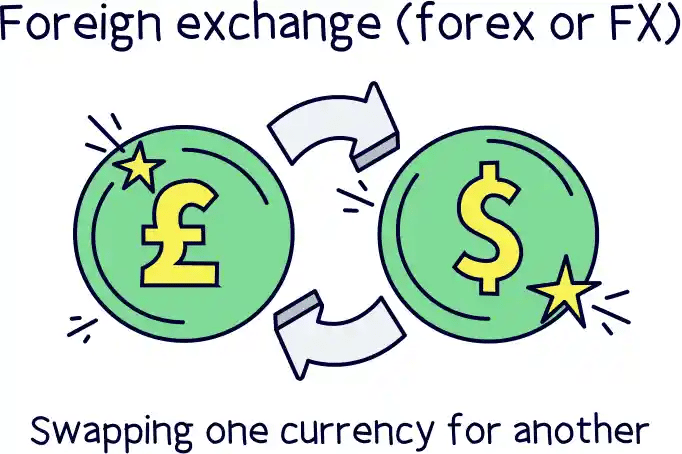
There’s also normally fees to actually spend your money abroad using your credit or debit card, for instance, £1 per transaction.
And, a fee if you want to withdraw cash from an ATM abroad (for example £3 per withdrawal).
All these fees add up, and can make your holiday a lot more expensive than it needs to be!
Did you know there’s 4 different types of cards to spend abroad? These are:
We’ll run through each one in detail below.
Taking a little bit of cash with you (in the foreign currency you need) is a great idea, you never know when you might need it – maybe you’re in the mood for street food, or want to tip for a great service. However, it’s not safe to keep lots of cash in your hotel room (even if it is in your sock).
You also won’t get a great exchange rate when you exchange your money. Especially if you’re already abroad or at the airport. Using a travel card can be much cheaper, not to mention safer!
These are pretty old school, but they do still exist. Traveller’s cheques are something you can buy before you go – it’s a physical bit of paper. And when you need cash, you can exchange them at certain places. Although it’s pretty rare to find anywhere that will actually change them for you these days.
Prepaid travel cards are often the best way to spend money abroad. They’re super easy to get started (there’s no credit checks), and easy to use – you simply use a website or a phone app. They’re typically the lowest cost option too.
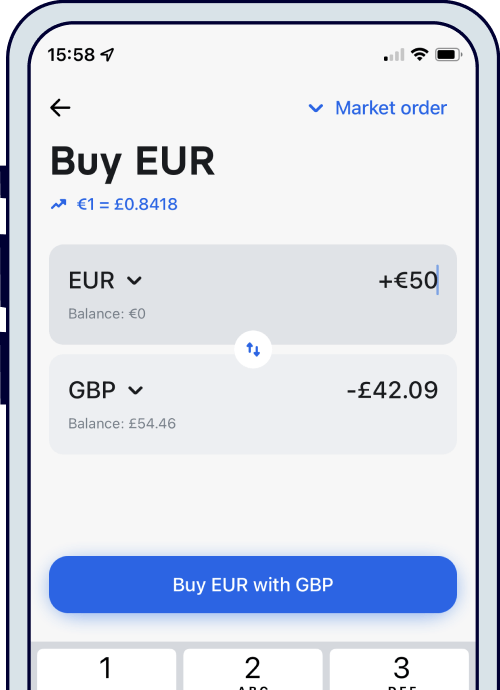
The idea is you top it up with money before you travel, easily use the app to convert your money to the currency you’d like, and then use the card just like you would in the UK. The card is often contactless, and accepted almost everywhere.
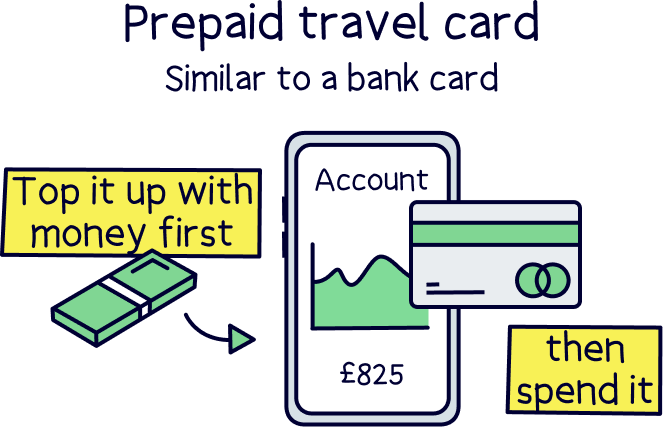
You can also keep topping up the card while you’re abroad if you need more spending money too (saving money from making cash withdrawals from your debit card).
The exchange rate you’ll get is typically the lowest possible, which is the mid-market rate, or interbank rate. This is the exchange rate banks use to exchange money between themselves – and so doesn’t include any hidden fees. It’s the ‘real’ exchange rate.
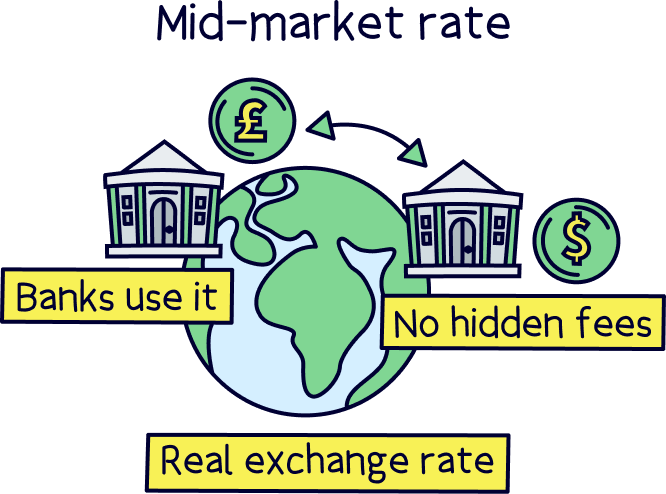
A prepaid travel card provider would then add a fee on top of this, and this fee can be pretty low. For instance, with Wise¹, this is as low as 0.41%. Pretty great right? Banks would typically charge a lot more.
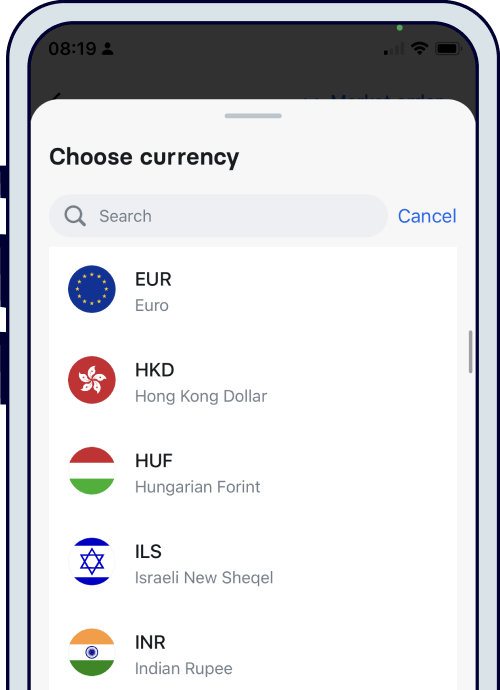
However, as they’re prepaid cards, you can’t use them for ‘pre-authorised’ transactions. These are things like car hire purchase, or pay-at-pump petrol stations.
If you’re keen to learn more, here’s our guide to the best prepaid travel cards.
Note: you’ll often have to pay a fee to get the card delivered to your home, for instance £7.
These are quite clever. Instead of creating a whole new bank account, getting a credit card, or a prepaid travel card, you can get a direct debit travel card which links directly to your existing bank account.
What happens is, every time you use the direct debit travel card, it uses the local currency (for instance Euros, if you’re on a holiday to Spain), and this will be converted into the currency straight away from Pounds (for a low rate), directly from your existing bank account.
So, it looks like Pounds are coming out of your bank account, but you’re actually spending in the local currency, saving lots of cash in bank fees, and benefiting from a low exchange rate too.
Pretty amazing right? This is thanks to something called ‘open banking’, which allows technology providers (such as card providers) to access your bank account. (It’s all completely safe.)
You’ll be saving around 3-5% depending on who your current bank is, and you’ll be paying around 0.50% as a fee to exchange your cash when you spend. A popular option, and the best direct debit travel card is Currensea¹.
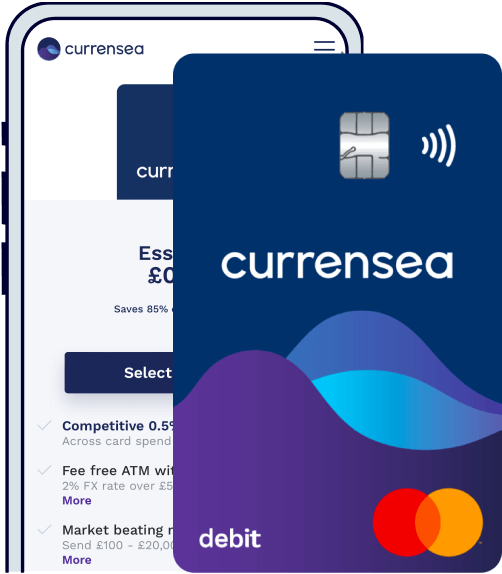
Specialist travel credit cards are a popular option too, but not necessarily the best.
They typically use a low exchange rate, such as the Mastercard exchange rate or Visa rate, which is one of the lowest you’ll find, but they can add fees on top of this.
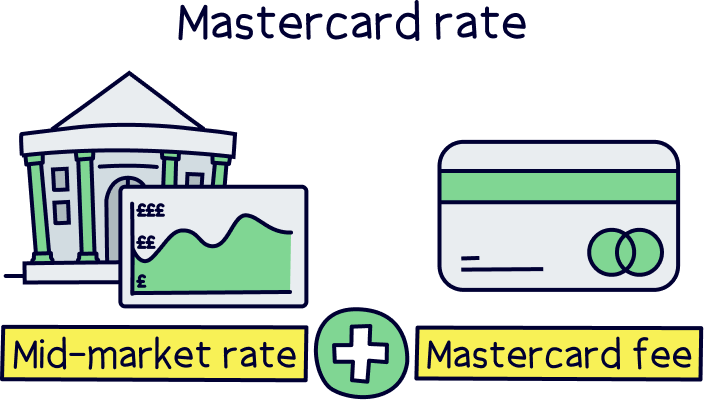
Some providers will also add a fee to make a transaction with a credit card abroad (called foreign transaction fees, or a non-sterling transaction fee), such as £1 per transaction.
There can also be cash withdrawal fees to get cash out of an ATM abroad (and in the UK), such as £3 per transaction. And, withdrawing cash from a credit card can appear on your credit file(!). This can affect your ability to borrow money in the future (such as if you’re going to apply for a mortgage soon) – this is because it looks like you have no other option but to use your credit card to get cash.
On top of that, you’ll likely be charged interest on cash withdrawals (on the amount you withdraw from an ATM), until you pay it back, for instance 30% per year, charged daily.
Overall, it’s not often a good idea to withdraw cash from a credit card.
The benefits of using a credit card is that you’ll have greater protection when buying things, called ‘section 75’ protection. This means you can ask for a refund from the credit card company if you haven’t received a product or service you’ve paid for. Having said that, prepaid cards and debit cards have a similar feature called a chargeback.
You’ll also typically have to go through credit checks and make a fairly long application for a credit card, and you’ll be given a credit limit (how much you can spend).
They can be worth it if you’re travelling a lot – but for a one-off trip, or a trip once a year, there’s often better options for spending abroad, such as a prepaid currency card.
You’ll probably be familiar with a debit card, as you’ll likely have one with your bank account. A travel debit card is exactly the same, except you’ll be applying for a bank account that has low fees when spending money abroad. (Again, please don't just use your normal debit card abroad!)
The travel debit card bank will typically have low exchange rates when spending abroad, likely the low Mastercard rate, and then a fee added on top (for instance 0.60%). They’re typically not cheaper than a prepaid travel card.
You’ll normally also be able to withdraw cash from an ATM for free (up to a limit, for instance £300 per month), and then pay a fee for anything after this.
You’ll of course need to send money over from your bank account in order to start spending, so it’s pretty similar to a prepaid card, except you’ll have to make an application for a brand new bank account, which will typically involve credit checks.
They can be worth it if you travel a lot and are looking for a new bank account.
That’s all there is to the best card for spending abroad. Our recommendations have got super low fees, easy to open an account, and great phone apps to use.
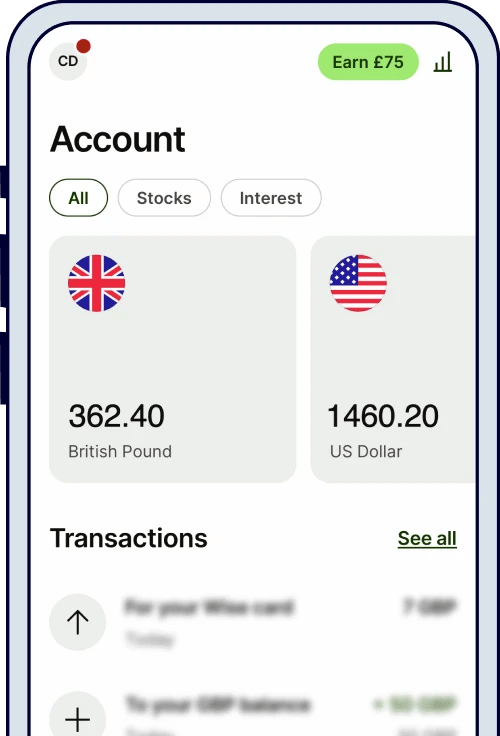
You could also check out Currensea¹ for a direct debit travel card that connects straight to your current account (main bank account), so you’ll save a lot of cash on bank fees, while spending in the local currency.
With both types of card, you’ll benefit from some of the lowest exchange rates out there, such as the interbank rate (the rate the banks use), or the Mastercard rate, and with low fees on top. You’ll also be able to get cash out of an ATM for free (up to a limit).
The alternatives are a travel credit card or debit card with a new bank account (that’s designed for spending abroad). These can be good too, but you likely won't find one cheaper than our recommendations – and you normally have to do a full application with credit checks in order to open one. They’re more suited to regular travellers who are looking for a new credit card for regular spending, or a new bank account with some nice travel perks.
That’s the travel money sorted then. All that’s left to do is enjoy the holiday!
Currensea tops the list – it's super simple to use, just connect it to your bank account and it’s low cost too. You'll also get a £5 welcome gift.
Currensea tops the list – it's super simple to use, just connect it to your bank account and it’s low cost too. You'll also get a £5 welcome gift.
We’d love to hear from you, and it will help others too.
Currensea tops the list – it's super simple to use, just connect it to your bank account and it’s low cost too. You'll also get a £5 welcome gift.